During my previous Tour through Brazil, there occasionally were places where interesting and beautiful birds seemed to be dripping off of the trees. Many of those places were in the southeast part of the country, wherever residents put out fruit feeders, which continuously attracted many colorful species. Probably the best location, however, was The Pantanal, the immense wetland in the southwestern region, near the borders with Paraguay and Bolivia. Wetlands are usually great places to see birds, and that particular example may have been the most facile place I have yet seen, in that regard. Therefore, I was expecting to be able to tally a great number of new species during the birding stops I planned to make along my transit through the region of Amazonia, well known for its high level of biodiversity, at least for the time being.
As it turned out, there were birds around, but my observations of them were always challenging, the total number of new species seen was somewhat disappointing, and acceptable photographs were even more rare. Consequently, my count of new species overall is quite a bit behind where I wanted it to be at this point of the route, and I am not sure if the remaining weeks of this section will be able to compensate for that in a meaningful way. While the days ahead may not provide species in great quantity, there are some exceptional examples to be potentially seen, so that thought tempers any current anxiety.
The first primary birding location I visited was the Anavilhanas National Park near Novo Airão. Access there is by boat tours, arranged in the town, going around, and to, the local archipelago of river islands. For me, the amount of time spent on the river looking for waders and other waterbirds was too long, relative to the amount spent walking the forest trails on the islands. New species seen in the park, and its surrounding region, but not well photographed were Red-Capped Cardinal, Band-Tailed Nighthawk, Lessons Seedeater, Streak-Throated Hermit, and Striped Woodcreeper. One that I almost had to include on that list was Orange-Fronted Yellow Finch, which I did not try to image at first, because I thought it was a commonly-seen Saffron Finch. Fortunately, another chance came along the next day, and I managed this shot from a moving boat.
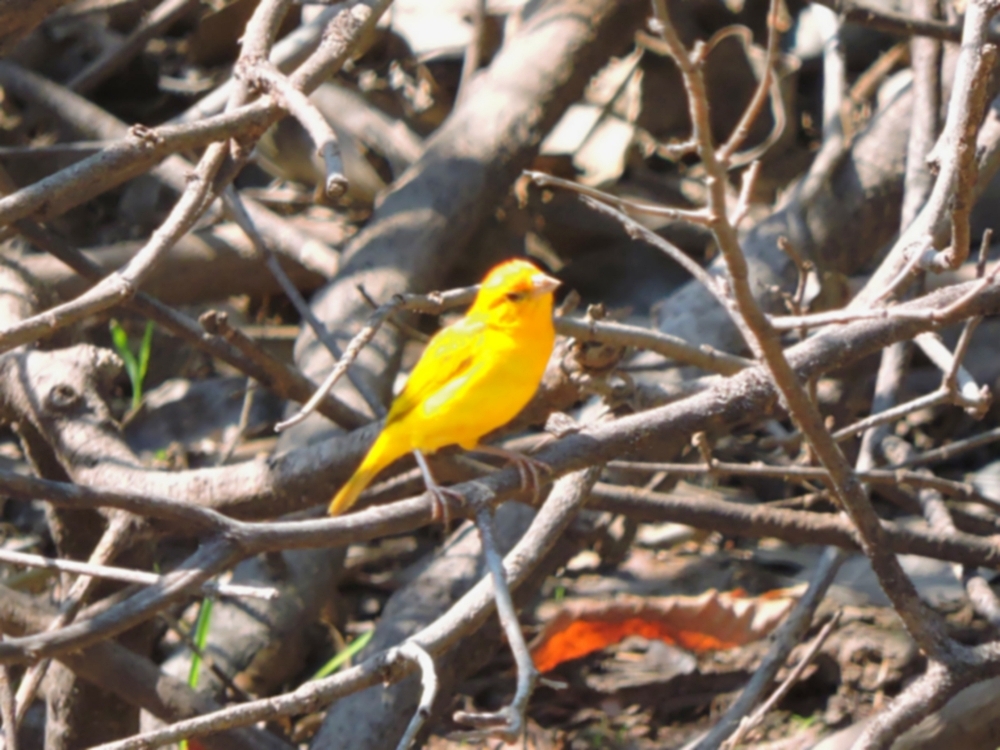
One bird that was cooperative, was Wire-Tailed Manakin, a species that was high on my list of targets. Unfortunately, the only example I saw was this juvenile, which didn’t yet have its striking adult plumage of jet-black and gold, with a red cap. If you look carefully, you can, at least, see its wire tail.
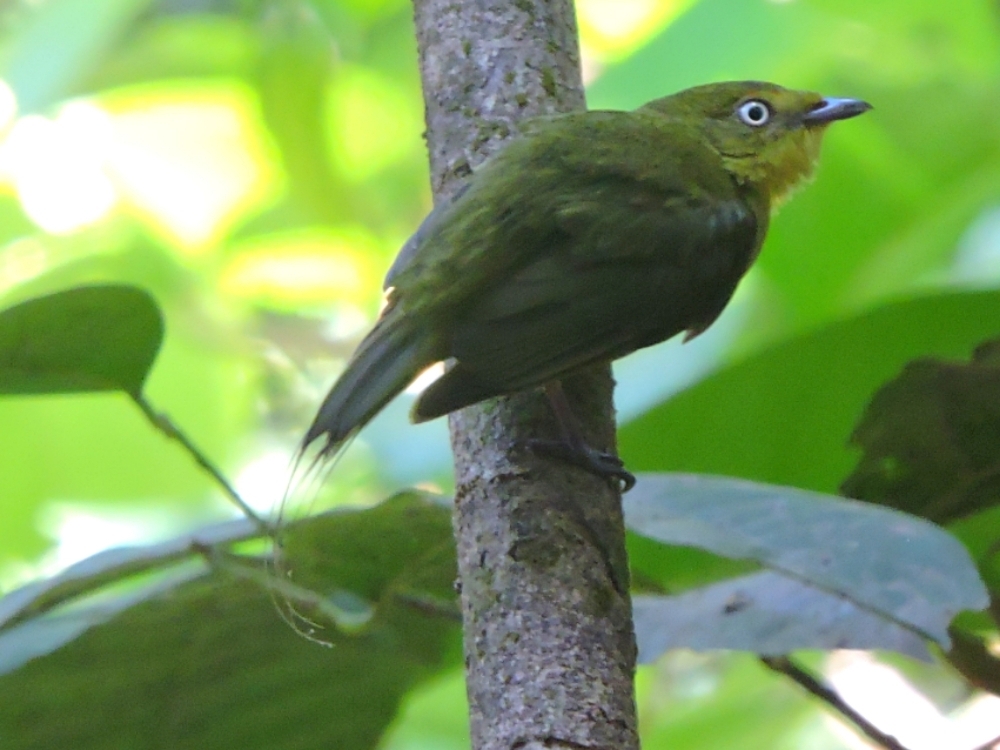
My next attempt was at the large botanical gardens, back in Manaus, which are really just a large, square area of reasonably undisturbed forest at the northern edge of the city. It supposedly has a large list of sighted species, many of which could be seen from its canopy tower. However, after a lengthy taxi ride to the entrance, which brought me there much later in the day then I should have started, I saw precisely zero new species, a very disappointing result.
Originally, I had plans for another birding stop in the area, but that, in fact, didn’t happen. There is one relatively short road that leads east from Manaus for a while, near the northern bank of the river, crossing through a few large areas of primary forest. Using Maps satellite view, I was able to determine that one of those areas was bisected by a set of power cable towers, and that there was a typical small dirt service road, which was blocked off to the public, paralleling the transmission line’s route. I had intended to sneak out along that pathway for several kilometers and then camp there for two nights, at what was going to be my own private birding lodge. However, since I was behind schedule, the bike needed some work, and my tent was still out of commission from the Ant Attack, I had to abandon that plan. Perhaps that was for the best, as going out in the jungle alone may not have been the smartest idea.
After that, I had hopes of possibly seeing one or two new birds from the decks of the riverboats that would take me east. Given the size of the Amazon River, I was not particularly surprised that I didn’t see anything of interest on that voyage. There were numerous Large-Billed Tern near the shorelines, as well as a few common Swallows, but the only birds I observed crossing the river were Great Egret.
One of the reasons I decided to split the river trip into two segments at Santarem was to be able to do a little birding along the way. My idea was to ride south to the Tapajos National Forest, about seventy kilometers away, spend a full day birding there, and then ride back to the city on the following day. That forest is reasonably intact, and has a research tower that is listed as a productive hotspot on eBird. However, for the same reasons mentioned above, I also had to modify that plan. Instead of cycling there, I arranged for a well known local guide, Gil Serique to take me there on a day trip. That worked out well, since Gil is a knowledgeable local, who speaks perfect English, and who is friends with all of the forest staff. The latter fact was helpful, since visiting the forest usually requires permits, and the tower is generally not open to the public, and so I was able to avoid that hassle.
Unfortunately, the birds there were also notably uncooperative that day, especially concerning photos, and our time up on the tower in the afternoon was cut short by an approaching thunderstorm. One bird that I had seen previously, though only in dissatisfying fly-past sightings, but for which I will bend the rules and post photos of here, was King Vulture. The ability to see such an unusual and interesting species at close range was brought about by several kilograms of meat scraps, which were left out upon an old fallen tree. Returning to that location after a few hours provided excellent viewing opportunities for us.
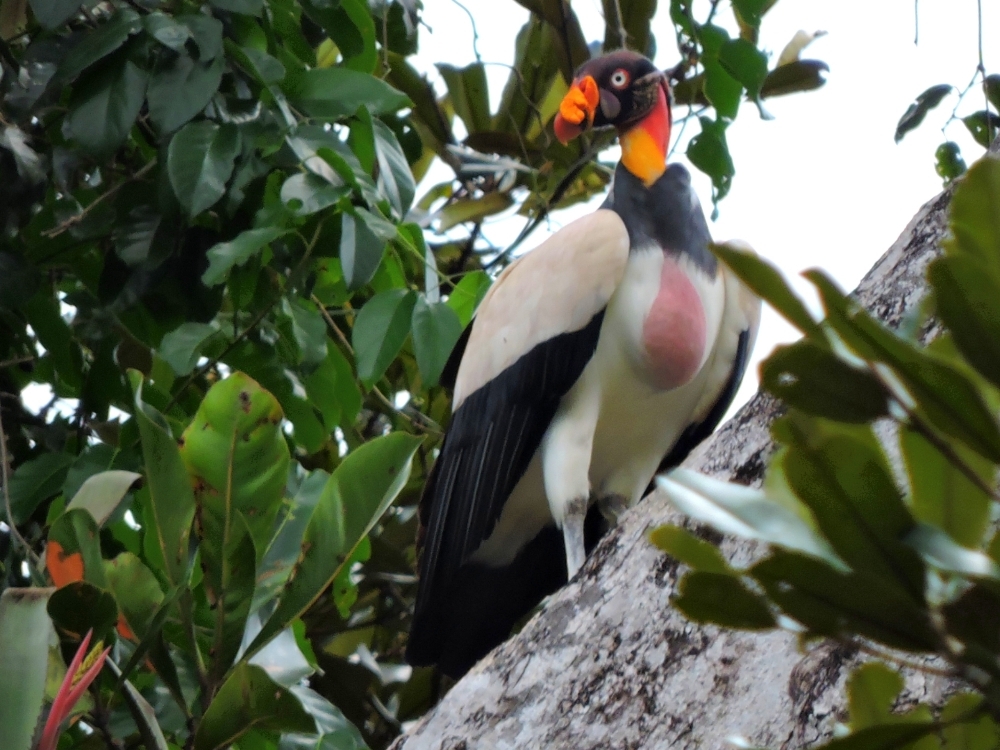
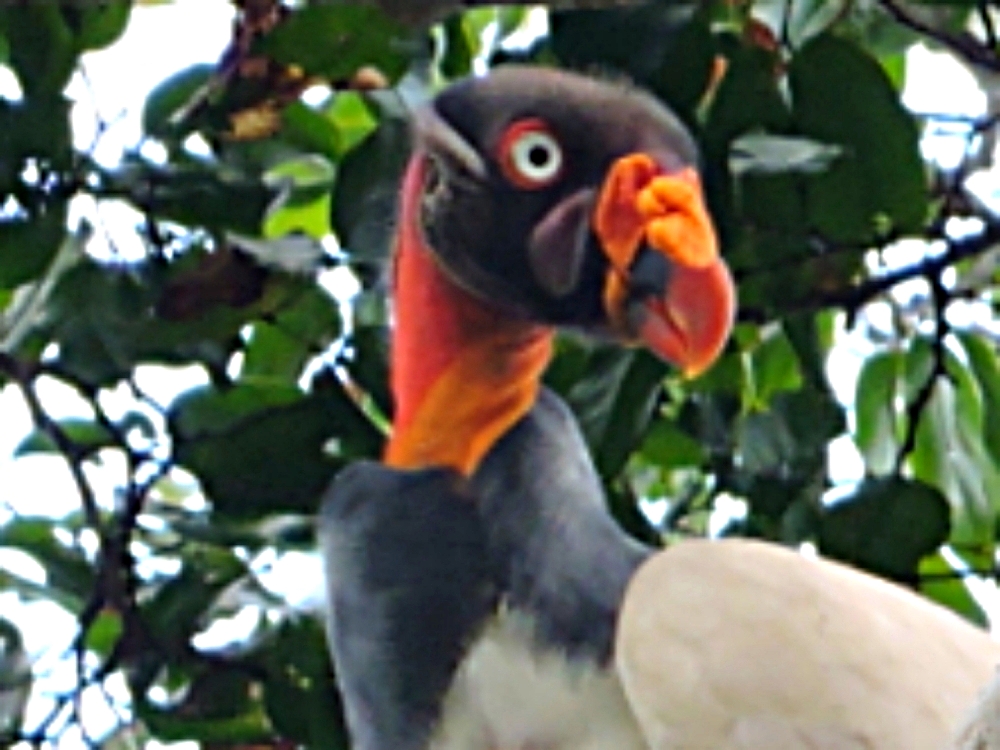
The best bird of the day was probably Santarem Parakeet, a species that was recently split from Painted Parakeet. Other new birds seen that day were White-Fronted Nunbird, Spangled Cotinga (unfortunately only a very drab female was seen,) Black-Eared Fairy, Red-Billed Pied Tanager, Cinereous Antshrike, and Spix’s Warbling-Antbird. Back in the city of Santarem, I added two more new birds, when I didn’t have my camera at hand, Helmeted Pygmy-Tyrant and Oriole Blackbird.
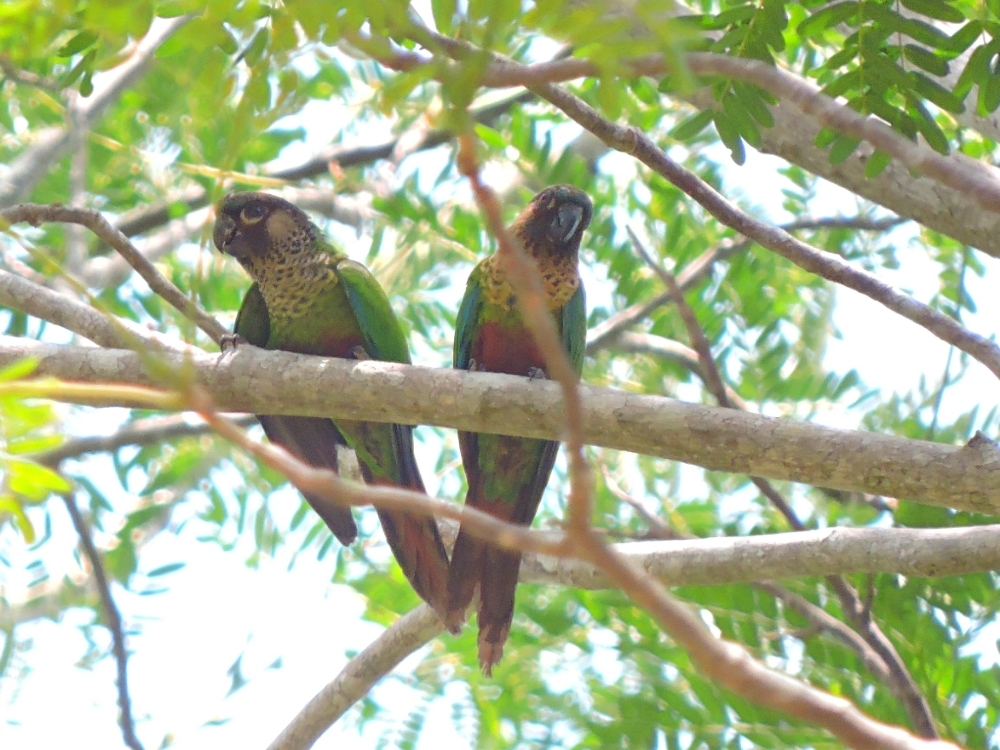
The last major stop with nearby birding possibilities was the city of Belem, with two small forest reserves not far from the city center. After doing some maintenance on the bike, I had only enough time to try the closer of the two, a state park at the edge of the city, and I did not get as early a start as I should have. Unfortunately, the park is closed on Tuesdays, the only day I had available. I assumed that riding along the road would be acceptable, but after a short time someone politely told me that I would need to go back to the entrance to obtain authorization, and at that point, with few birds being seen, I just gave up for the day.
So, after a rather disappointing showing for my efforts in Amazonia, I then began cycling towards the next part of the country I would be visiting. At this point, after several trips to the neotropics, I have seen most of the birds that would he expected to be found around ponds, lakes, creeks, and marshes in that region. So, in theory, I could now simply ride past those features without straining to scan them for interesting birds. Fortunately, I still do that out of habit, and, in that case, it paid off with the addition of South American Snipe…
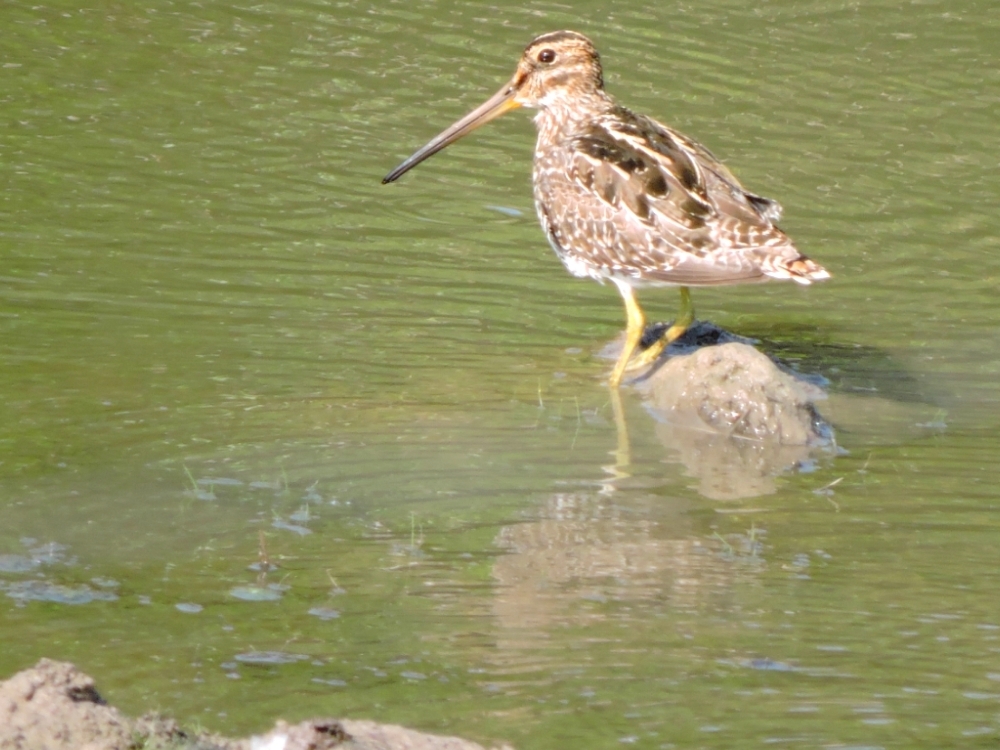
…and Brazilian Teal, one of few missing ducks on my list, which I somehow failed to see on any previous trip.
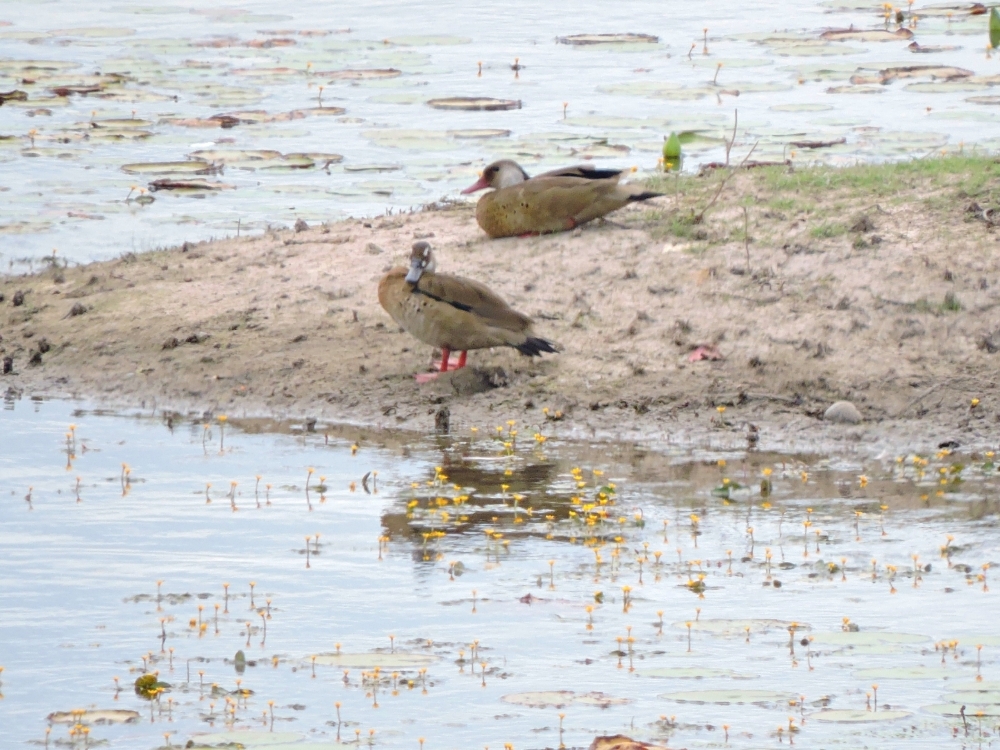
However, the best bird of this section was still to come, namely, Janday Parakeet, another beautiful member of the genus Aratinga. I had briefly seen one during urban cycling in Belem, when I had no opportunity to attempt to take a photograph. For a while, I feared that unsatisfactory sighting would be my only observation of that amazing species. Fortunately, a flock appeared on the roadside one afternoon, and began to feed on palm fruits. There are actually six birds in this photo, and when they took off in flight they made a spectacular sight.
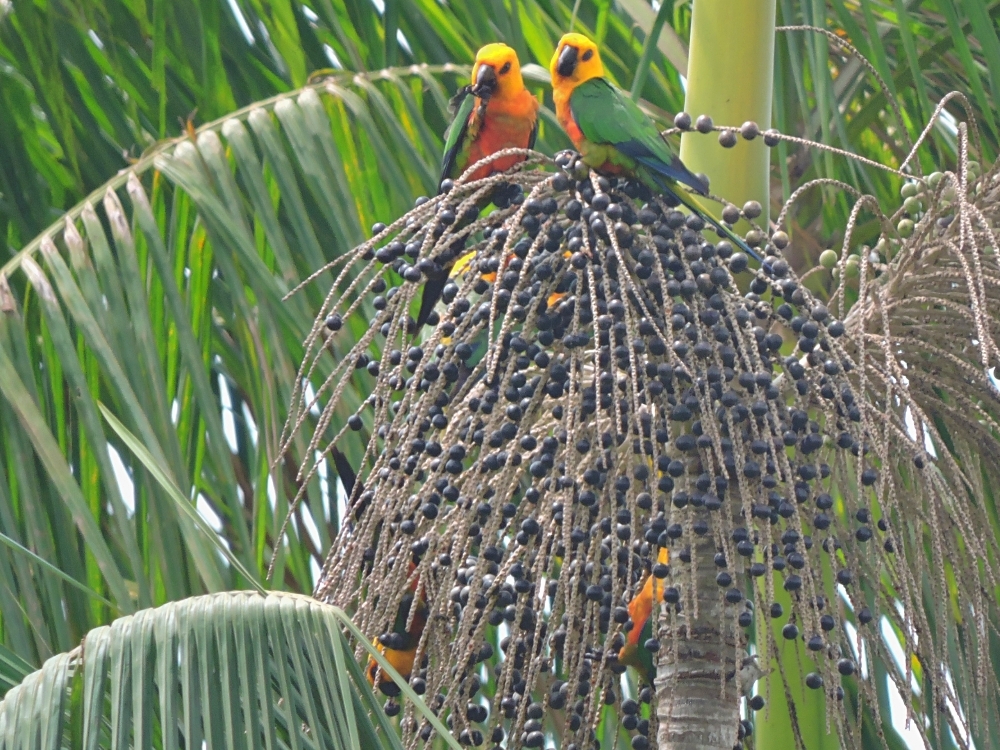
I do not think I will be able to get myself to any excellent hotspots for a while, though, as I mentioned above, there are a few outstanding species possible along my forthcoming route. It will be likely, therefore, that quality will continue to surpass quantity for the time being.